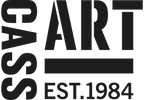SKY ARTS PORTRAIT ARTIST OF THE YEAR SERIES 11: HEAT WINNERS
29th Nov 2024
Its back! And we are glued to our screens as once again, artists from across the UK take to their easels to capture celebrity sitters in just four hours for Sky Arts Portrait Artist of the Year. Competing to win a £10,000 commission to paint multi-award-winning broadcaster Lorainne Kelly for the National Portrait Gallery in Edinburgh, their works are carefully selected and scrutinised by a panel of expert judges - award-winning artist Tai Shan Schierenberg, independent curator Kathleen Soriano, and art historian Kate Bryan.
Working with Winsor & Newton, Cass Art has supported the show since the first series in 2013. We caught up with the heat winners to find out more about their experience of the show, their work, and get tips and advice for emerging portraitists…
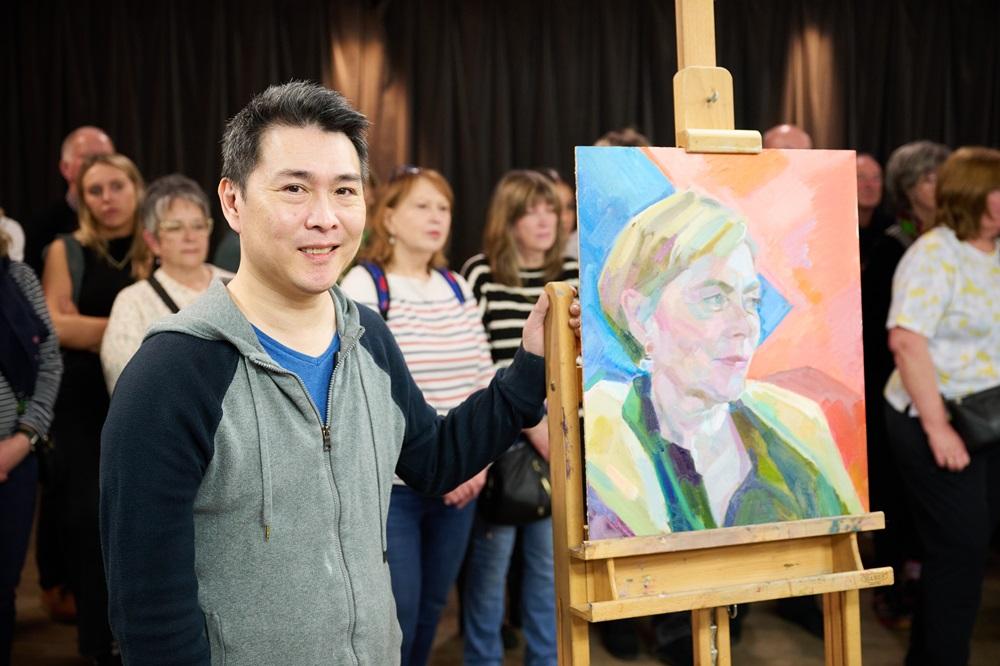
HEAT 1 WINNER: PAUL LEE
Hi Paul, congratulations on winning Heat 1! How did you find the experience of painting a celebrity live in front of the cameras and judges?
Thank you very much! For me I found the whole experience actually quite tranquil despite the crowd and constant activity of the production crew. Initially, I felt a bit disorientated to be in such a unique situation, it took a little time to get my bearings but I think like most artists, once you get into your stride you zone out and it's just painting as usual. The judges, members of the Storyvault crew, fellow contestants and the crowd were all very kind and that made the day a pleasant experience.
You painted Actress Saskia Reeves and captured her likeness very early on. What do you think is key to capturing a likeness in your sitter?
One of my biggest fears once I found out I was going to be on the show, was ending up with a painting in which the likeness was way off, so in the weeks leading up to my heat I practised painting portraits in 4 hours. I painted portraits of sitters from previous shows. I think it helps to try and pick up on what makes the sitters face individual and identify those unique details. That's a difficult thing to do in a short space of time and if you are not familiar with that person.
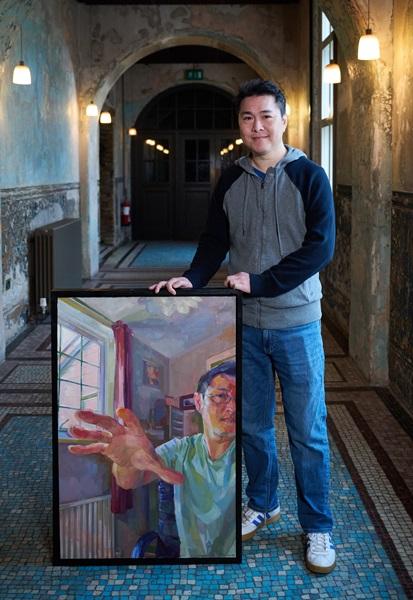
You started by blocking in facets of colour with large, confident brush marks, observing greens, purples and yellows in the cool skin tones and quickly covering the canvas. Judge Kate Bryan called you a ‘great colourist’, could you talk us through your process and your colour palette choices?
Yes, I probably said it a few times during the show, but I just tried to cover the canvas as quickly as possible and eliminate all the white ground. In that way you have a good basis to build on and you can establish all your relationships in terms of colour, tone and compositional shapes. When I started painting again 2 years ago, I limited myself to the Zorn palette which is just black, white, yellow ochre and red. As I got back into the swing of handling paint again I started to change my palette but still limiting myself to just white, ultramarine, cadmium red , yellow and alizarin crimson and trying to get as much as I could from just those colours. Since then I have added a few more colours like cerulean blue, permanent orange and permanent green and replaced the crimson with magenta.
What are your other go-to materials for painting?
The brushes I use are hog hair brushes, mainly filbert, but I use flats occasionally. I think they help to keep my work bold and expressive since it's not so easy to be able to produce very delicate work with them (at least for me anyway!). I have been using Pro Arte series A brushes, but in the future, I think I may try cheaper brushes and see if I can still get the same results. I use mainly Michael Harding paints. I think when it comes to paints, it does make a difference to use the more expensive brands. I like using fine linen sealed with Roberson PVA medium and then primed with alkyd oil primer.
Thanks Paul! See more of Paul’s work at paulleeartist.co.uk or @paullee_artist on Instagram.
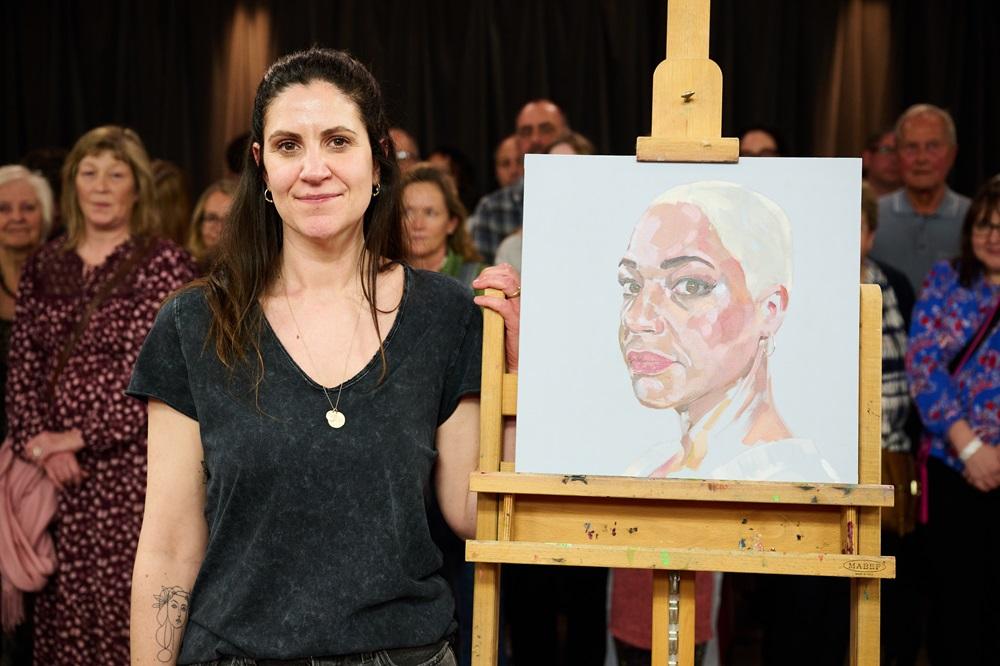
HEAT 2 WINNER: POLLY PINCOTT
Hi Polly, congratulations on winning Heat 2! How did you find the experience of painting a celebrity live in front of the cameras and judges?
Thank you! Honestly, the whole experience was just totally surreal! I am so used to my little spare room studio bubble that being in front of so many people, let alone the cameras, was completely daunting. I didn't even have space in my brain to think about the actual judges (dare I say!), but I think most Artists would agree we are our own worst critics first and foremost anyway. However I’ve been watching the show since it very first began and have applied for many years, so to actually be there, doing it, was just such a dream come true that the whole day was one big ball of adrenaline! I found the whole experience surprisingly emotional.
Your sitter was Actress Cush Jumbo, and you started by gridding up the surface and drawing the face in coloured pencil, capturing her likeness with her powerful, direct gaze the focus of the work. You then carefully pieced together the facets of the face with minimal yet impactful brush marks. Were you careful not to overwork the piece, or, if given more time, would you have developed it further?
I was definitely concerned about overworking. There’s often a stage within my portraits where I lose the likeness and have to tussle to get it back, or make drastic marks that I don’t feel belong. Given the comfort of more time, these can be rectified but I knew that if that happened on the day I may not have that luxury. Therefore I was more tentative with my mark-making. There were definitely parts that had to remain unfinished, but I knew I was slightly adapting my style (whatever that is, it can change week to week!) to leave those ‘unfinished’ parts to speak for themselves. And honestly, I wouldn't have changed that. Although not perfect and I could spend plenty of time picking it apart, to me it left the painting with a rawness and vulnerability that Cush had been open enough to share with us about herself. She had been such a collaborative sitter and I genuinely felt a connection with her from the very start, hence the direct gaze. It felt comfortable between us but with the intention of offering a sense of strength and pride to the viewer that also reflected a very large, important part of her personality and story.
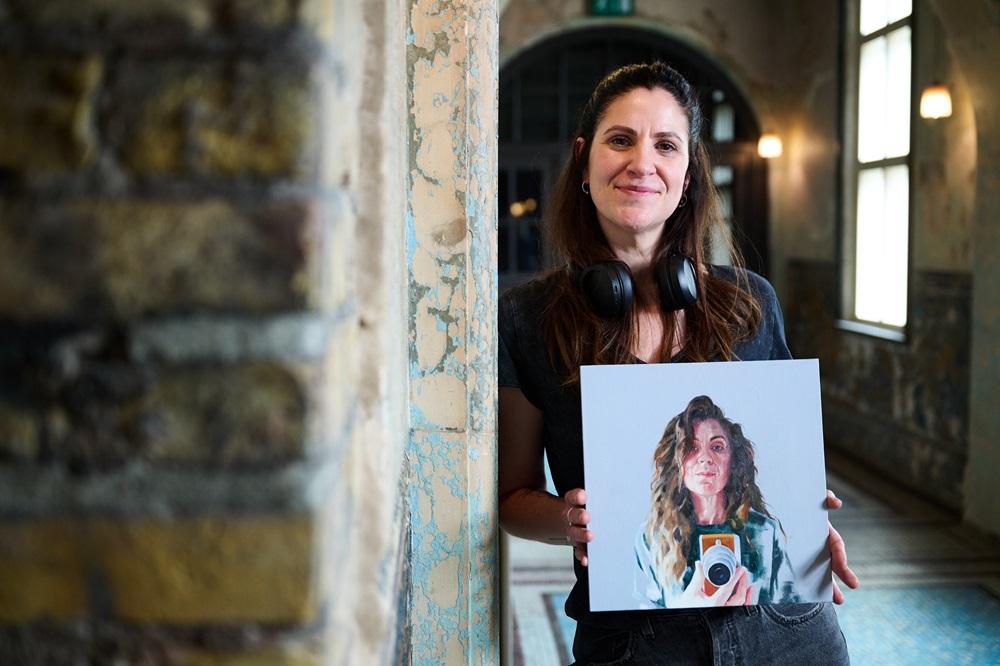
When you revealed the painting, Cush became emotional, recognising an intimate version of herself in the work. She also chose to keep the piece! How did it feel knowing your painting had moved her in this way?
Totally overwhelming! It’s always such a daunting moment to present someone with their portrait, not knowing if they will recognise themselves or even like it! Achieving a likeness is always amazing, and very important to me, but to connect and affect the sitter emotionally is indescribably powerful. It was incredibly emotional all round! I think she really understood and appreciated what I had tried to achieve in offering up her strength and vulnerability all wrapped up in one. I always strive to get the human essence of my sitters, trying to bring out a bit of what is below the surface, and Cush felt to me like the perfect sitter for the job! The fact that this was recognised, and well-received, was the most heartwarming moment.
If we rummaged around in your studio, what art materials would we find and do you have any favourite brands?
Oh you would find all sorts! I’ve always been quite curious and have an eclectic style in many ways so there’s different materials tucked away all over - paint, charcoals, pencils, lino cutting materials. I try to keep organised but I just don’t think it’s in me for longer than 20 minutes. I’m a messy painter so you’ll find sheets of kitchen towel or rags strewn about, and a variety of grubby dungarees hanging from my easel or over chairs.
I have a fairly wide variety of brushes, and don’t like to throw things away so have many that I don’t use anymore which were handed down to me by my brother a good 20 years ago. I also use cotton buds a lot, very technical I know, but great for removing paint on small works. I paint in oils and like to try out different brands, always looking for quality that is still affordable! My go to solvents are Sansodor and Linseed Oil. I tend to work predominantly on canvas boards or paper.
I have an easel for larger works but also love to get messy with charcoals on the floor or taped to the teeny slice of wall space I have. When working on smaller pieces I sit at my drawing table, an old chest of drawers found in a charity shop and adapted by my dad into a drafting table. He has also fashioned me a mahl stick, brush holders and my absolute favourite wooden palette in the shape of a ‘P’. So I guess you could say he’s my favourite brand!
Thanks Polly! See more of Polly’s work at pollypincottart.com or @pollypincottart on Instagram.

HEAT 3 WINNER: BROGAN BERTIE
Hi Brogan, congratulations on winning Heat 3! How did you find the experience of painting a celebrity live in front of the cameras, judges and of course, your wonderful mum?!
Painting in front of cameras obviously adds an element of pressure I don’t usually experience when painting in my studio, but my practice is a very social one. I’m obsessed with people. First and foremost, that’s why I paint. So I found the interactive element of the day - being around the judges, chatting to the audience - a really energising part of the process.
And it was a joy to share the experience with my mum and dad. I’ve been drawing and painting for my whole life, but I don’t think they’ve ever quite seen me in action like that before - it was a real joy.
You have a distinctive painting style with flowing brush marks, in some areas the paint is thin enough to see the light of the surface behind them, building to areas of thick impasto. How did you develop this style?
The freshness and immediacy of this way of painting helps me feel very connected to the sitter and the moment we’re sharing together.
More than a deliberate idea of what I want my style to look like, this technique developed instinctually from painting people again and again and again - it’s a process of finding what I’m interested in and sinking my teeth in, for example the broad strokes of how someone holds their body verses the tight, tender detail of their ear or the way they hold your gaze.
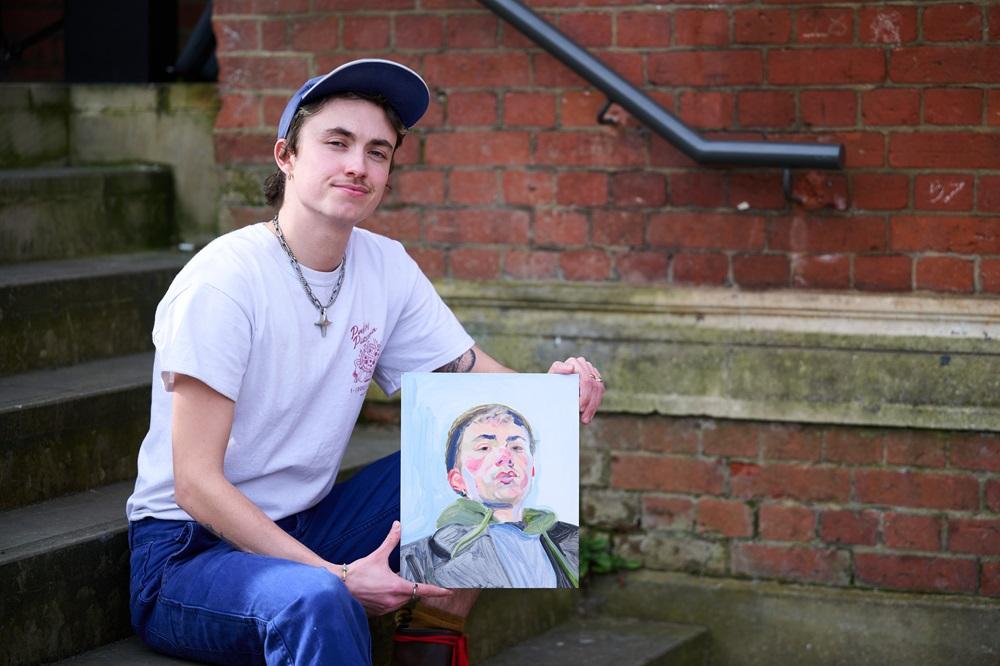
You painted Actor and Singer Layton Williams, judge Tai Shan Schierenberg described your work as a ‘daredevil bit of painting’ conveying a likeness of the sitter’s persona and attitude. Do you think your confident brushwork helped to convey the confidence of your sitter?
I think we were well suited, me and Layton! He was an ideal sitter. I love the tension between strength and vulnerability. I love a self-possessed and confident sitter. Yes, I think the way I paint suited his confidence.
I would have liked to tinker with the literal likeness if I had a few more hours to play, but capturing something of the day, the uniqueness of his energy… Something that feels real to the moment is always more important to me than a laboured likeness and his persona and attitude was very important to me.
What art materials would we find in your studio, and do you have any tips for aspiring portrait painters?
My ride or die, my right-hand woman is Winsor & Newton’s Liquin for those fluid, syrupy brushstrokes. And primed wooden panels for a surface that doesn’t suck the paint into it. These two things combined help me feel that every mark counts.
Thanks Brogan! See more of Brogan’s work at broganbertie.com or @broganbertie on Instagram.
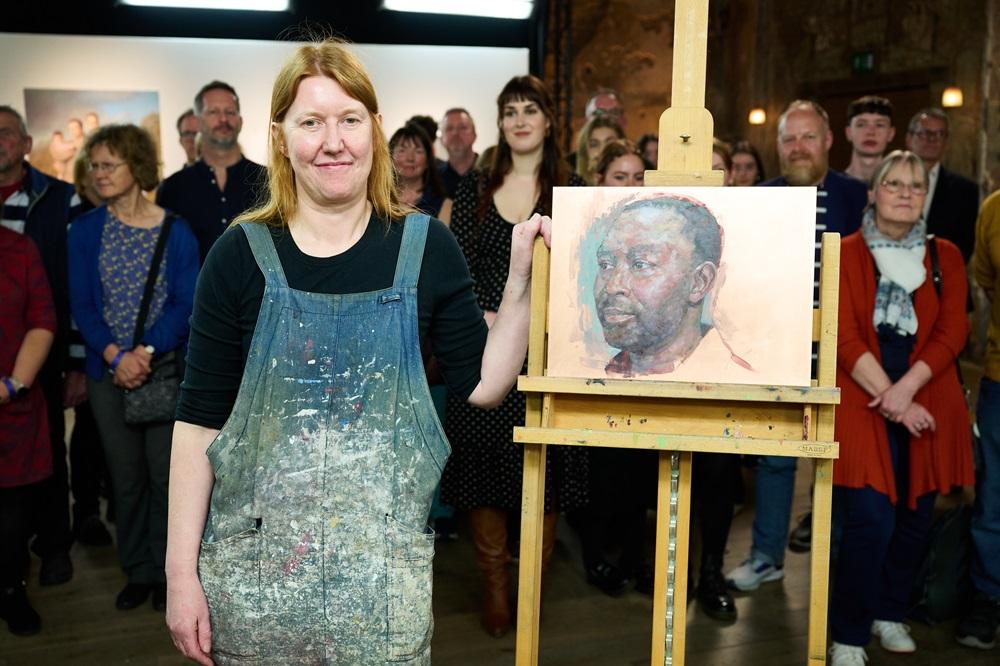
HEAT 4 WINNER: JENNIFER ANDERSON
Hi Jennifer, congratulations on winning Heat 4! How did you find the experience of painting a celebrity live in front of the cameras and judges?
It was certainly an intense experience! What you don't fully see on screen is the sheer amount of buzz and distraction - there's frequent interviews to judges or the production team, cameras swooping all round you and between you and the sitter and the audience is super close to you hanging over your shoulders, I should have used some horse blinkers as well as my headphones!! It couldn't have been more different than my usual solitary studio practice with only radio 4 for company...but it was also really exciting, the adrenaline was pumping that day for sure!
Your sitter for the heat was footballer Andy Cole who was a calm, pensive sitter. The judges were impressed by your ability to convey mood, feeling, and sensitivity in your paintings, how do you achieve this?
Andy was a fabulous sitter for me. I love to try and capture serenity with an edge of melancholy in my work and Andy really brought that. He was a point of stillness in a chaotic scene! I think mood and feeling in portraiture comes from deep observation. It's finding the subtleties in expression that we as humans naturally pick up on and interpret instinctively. The slightest lift of an eyebrow or purse of lip can say so much.
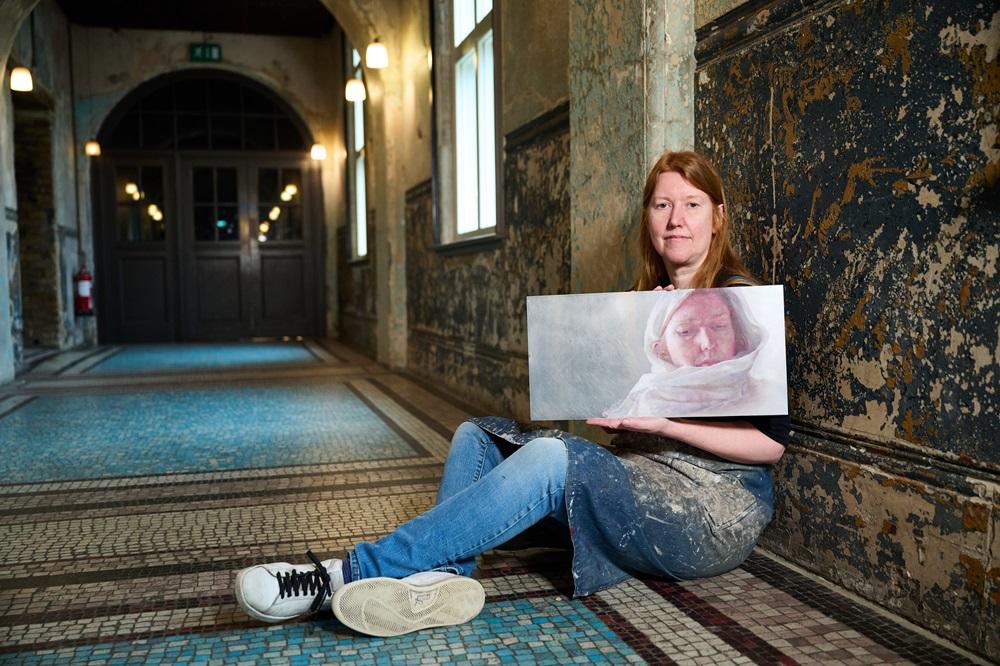
Your submission piece was painted on aluminium, and you chose to paint on copper in your heat. What do you enjoy about painting on these surfaces vs canvas or wooden panels and how do you prepare them?
I love to paint on metal because it can really make your work glow if you get it right. It's a very different surface from canvas or panel because there is zero absorbency, so you do have to adjust your technique. I also love that it's super easy to prepare, you just need to give it a quick clean with turps or meth spirit and you're off! I also like to give it a light sanding which adds a bit of bite so the paint doesn't slide around too much, and it also makes a less reflective surface which I prefer.
What are your favourite art materials for portraiture?
I have a very limited palette just yellow ochre, cadmium red (deep), ultramarine and white. I tend to use Daler Rowney Georgian Oil for the colours and Winsor & Newton titanium white. Genuine turpentine is my go-to thinner, I rarely use any oil mediums. My favourite brushes are ProArte Sterling 201. I generally get through one no. 2 long flat per painting because I can't bear it when the bristles aren't completely straight and start to splay!
Thanks Jennifer! See more of Jennifer’s work at jennifer-anderson.co.uk or @jandersonyart on Instagram.
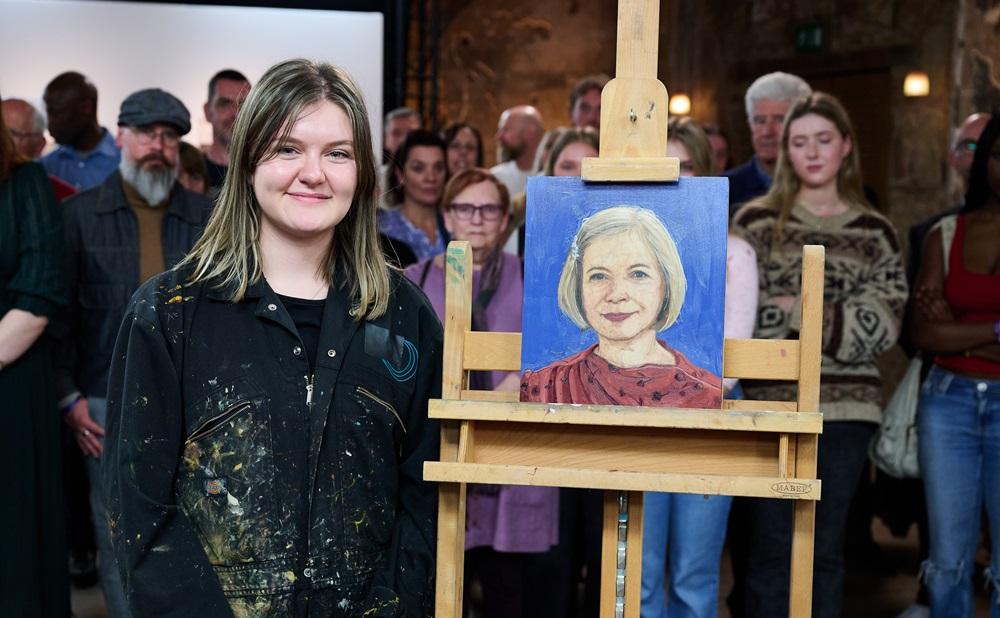
HEAT 5 WINNER: JENNA WALDREN
Hi Jenna, congratulations on winning Heat 5! How did you find the experience of painting a celebrity live in front of the cameras and judges?
Thank you so much! It was definitely a surreal but incredible experience. I felt surprisingly calm on the day, which was a shock to both me and everyone around who kept commenting on how weirdly relaxed I was! Reflecting on the experience I think a few things helped me to work under the pressure, the first being I had done a few timed practice portraits beforehand. The second being, at the start of the year I had drawn a lot on the streets of London and had gotten used to people watching me to work, asking what I was doing and why. So on the day it didn’t really phase me to have people watch me paint or have the judges ask me questions. Last and most importantly, I think how lovely everyone was, including the other artists, the judges, Stephen, my sitter Lucy and the crew made me feel at ease and confident to paint away.
You painted Author and Historian Lucy Worsley and captured her likeness perfectly. Tai described the portrait as ‘uncanny’! You painted on wooden panel, allowing the woodgrain to show through thin layers of oil paint. What do you think this technique adds to your portraits?
Materiality is of great significance to me, as I hope to portray those I paint in a careful and tender manner. I often gravitate towards using oil paint on wooden panels, as I like to juxtapose areas of heavily saturated paint against looser washes of tone. Allowing the wooden grain of the panel to breathe through certain areas of the work, disrupts the illusionism of oil paint and brings the pieces back to the naturalistic moments from which they were taken. I was delighted when the judges said I had captured a likeness of Lucy, as I always aim to capture the essence of the person I am painting!
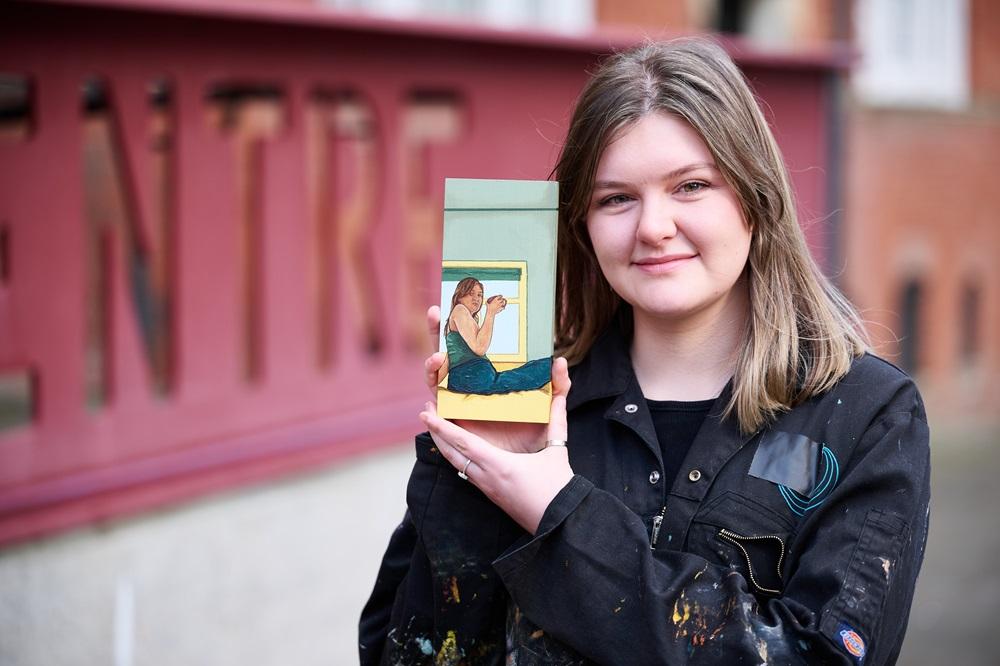
You seemed very organised on the episode, using a timer throughout the process to help keep you on track. Are you quite methodical in your painting generally – what does a typical day in the studio look like for you?
My normal way of working and a day in the studio includes; taking reference images and making quick sketches from life. I then translate these into preparatory drawings where I plan out my composition and colour palette using Promarker pens. I’ll then mix up some colours, draw out my composition and begin painting, often spending weeks working on multiple pieces at once. I knew I wouldn’t have enough time to replicate this process in the four-hour time limit, so I managed to find a way to edit this process down. I would give myself an hour to draw out the sitter, then another hour to capture the eyes, another for the rest of the face and the last hour to capture the clothing and hair.
What are your go-to materials for portrait painting?
When painting I always use cradled wooden panels as my surface, which I seal and prime with Golden GAC 100 and Michael Harding Clear Acrylic Primer. To draw out my composition and capture the likeness of my sitter I use Faber-Castell Polychromos Artists' Coloured Pencils in Cinnamon, Caput Mortuum Violet or Burnt Sienna. I find coloured pencils layer better with the thin washes of oil paint. Paint wise I always opt for Winsor & Newton’s Oil Paint with the odd tube of Michael Harding Oil Paint mixed in. I use around 10-15 different colours on my palette which I mix up into an array of colours. For the show I premixed around 25 colours, giving me various starting points for different complexions, hair colours and backgrounds.
Thanks Jenna! See more of Jenna’s work at jennawaldren.com or @jennawaldren on Instagram or @jennawaldren.art on Facebook.
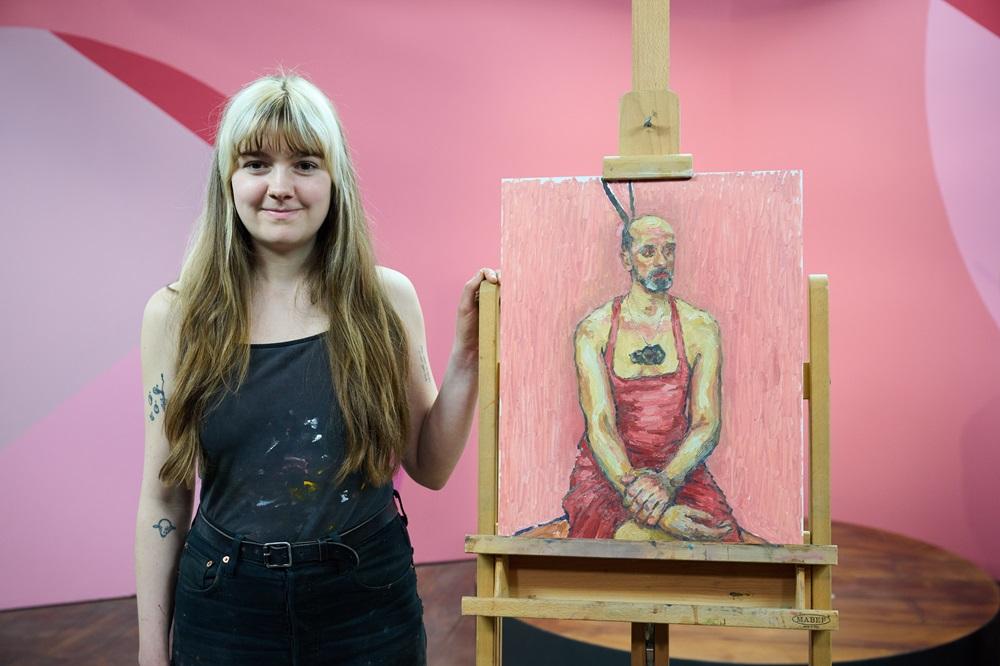
HEAT 6 WINNER: AUGUST LAMM
Hi August, congratulations on winning Heat 6! How did you find the experience of painting a celebrity live in front of the cameras and judges? How did you find the experience of painting a celebrity live in front of the cameras and judges?
The set could not have been a less natural environment for artmaking, but that was the point: it offered me a chance to demonstrate my creative process to the world from start to finish. The filming process was equal parts uncomfortable and exhilarating. I didn’t sleep at all the night before, so I was running on adrenaline for 24 hours straight. To paint in that state of mind was unlike anything I’d ever done. It’s still shocking to me that I was able to complete the challenge with no major issues, no mental or physical collapse. When the timer ended, I felt victorious for having produced any painting at all, regardless of quality. Winning was an incredible and unexpected bonus.
As a singer and writer, you’re a very creative person, but you mentioned in the programme that you have only recently begun painting. What inspired you to pick up the paint brushes and what do you enjoy most about it?
I started learning to paint as a way to cope with a newly diagnosed spinal disability. After years of working as a pen and ink illustrator, I was struggling with pain and mobility issues stemming from a genetic condition. Clearly, full-time drawing was no longer sustainable. So I transitioned to oil painting, in the hopes of continuing my art practice with less physical strain. Painting allows for looser, more fluid movement, which is easier on the body. Even though I still can’t paint full-time these days, it’s still more comfortable than drawing, and I do it whenever my body allows.
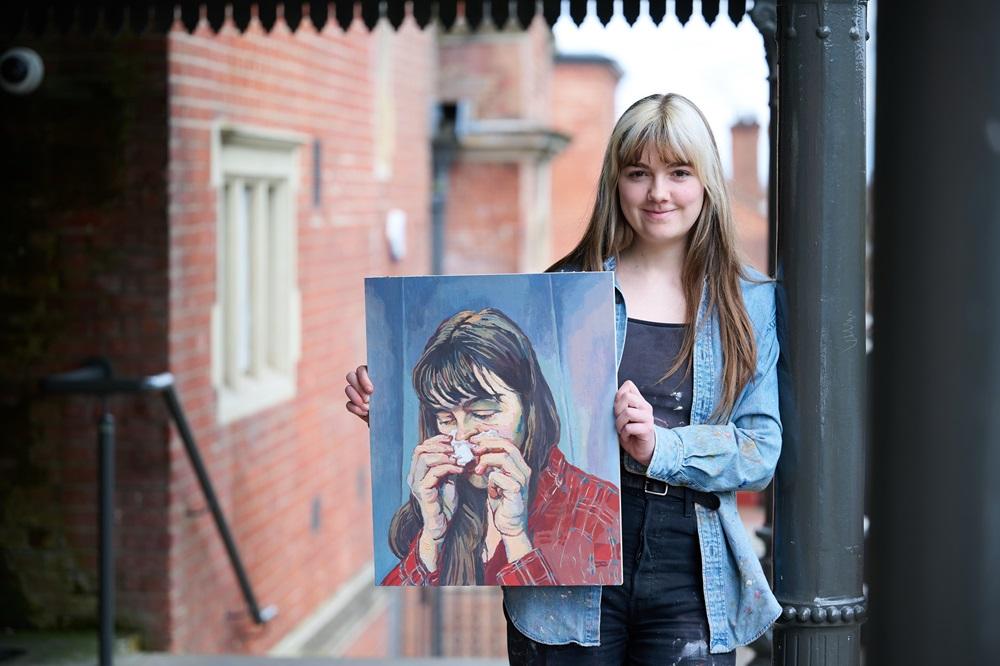
Your sitter was Fashion Designer Lyall Hakaraia, who you painted ¾ length with thick, impasto brush marks. Can you walk us through your process and how you decided upon your composition?
My priority when mapping out the piece was to include the face and hands. The face is necessary - it’s a portrait show, after all - and the hands are my favourite. I first sketched the outlines in red acrylic paint, then went in with oils. I’m always drawn to the subtle colours in skin, so it was great that Lyall’s arms were kept bare. This fact also allowed me to work with long, uninterrupted brushstrokes down the body. I worked in my typical style, which involves bold paint application, and I enjoyed emphasising Lyall’s anatomy with vibrant colours and impasto.
What are your must-have art supplies?
I don’t have any go-to materials. I work with a primary palette, mixing all my colours from red, yellow, blue, and white. But I always forget which particular colours I’ve bought, so I’ve ended up with a strange mix of paint tubes in my studio, that I pretty much pick from at random. I don’t use a medium to mix my paints, just Gamsol, which I hear is bad form. The setup is messy and unconventional, and it’s probably not archival, but I’m a firm believer in the idea that a good artist can work with any materials. Maybe over the course of my painting career, I’ll develop stronger affinities. For now, I’m open to experimenting.
Thanks August! See more of August’s work at augustlamm.com or @augustlamm on Instagram.
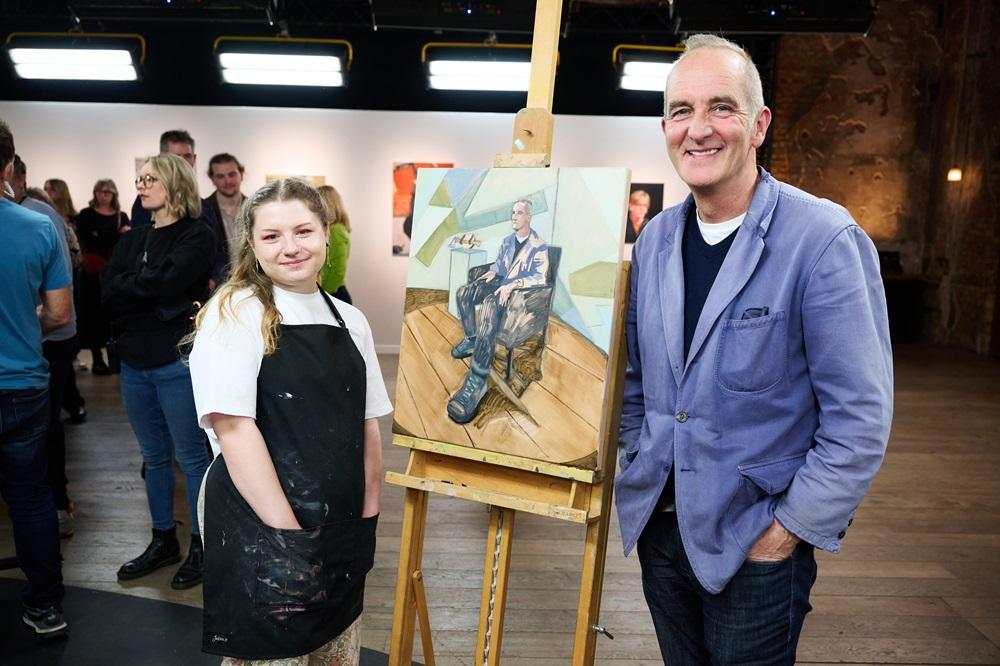
HEAT 7 WINNER: ROSIE PHILLIPS
Hi Rosie, congratulations on winning Heat 7! How did you find the experience of painting a celebrity live in front of the cameras and judges?
Appreciate it, thank you! I loved every minute on set. The whole team is so welcoming and enthusiastic. Of course the pressure is definitely there - I spent most of the day running on pure adrenaline, so some bits are a complete blur. But at the same time I could not have felt more in the zone; There’s something about the time limit, the audience, all the cameras tracking your every decision that serves as an insanely powerful procrastination repellent. I’m thinking I could do with working under those conditions more! Kevin was an absolute diamond of a sitter and we seemed to get on well. I could seriously discuss colour theory with that man all day.
Your sitter was Broadcaster Kevin McCloud, who you painted in full, exaggerating the foreshortening in his pose as a compositional tool. Tell us how you plan out your compositions.
Ha, yes! My compositions can be very strong. In the preliminary stages, I usually spend a lot of time thinking about what it is exactly that I am trying to emphasise. In portrait sittings I look for visually engaging stances, expressions or dynamics that give me an insight into someone’s character, or at least what I perceive to be. It feels important to find these moments organically; there is no real formula to any of it and I’m always finding new ways to play with space.

Both your submission piece and the painting of Kevin were energetic, dynamic works and Kathleen commented on your inventive mark-making. How important is narrative to you in your portraits?
Narrative has become increasingly more integral to my practice in recent years. When I began creating my own compositions as a teenager, it felt more like this inexplainable drive to freeze certain moments or people in time and space. In sharing my work with others, I have come to realise that there’s something really exciting and interesting about the exchange of stories that comes with portraiture; it can be really magical and surreal to perceive others through a wildly subjective lens, even if it’s the result of a fleeting exchange.
You began by mapping out compositional lines with an enormous piece of charcoal! What other art supplies would we find in your studio?
The charcoal is actually a relatively recent addition and came about during a residency when I was producing a lot of really big sketches - It’s brilliant because it’s just way too clunky to even attempt detail with, so it keeps things nice and loose in those early stages. Aside from the mega charcoal, I’m afraid my studio contents are relatively standard. Like many painters I really enjoy Michael Harding oils, as well as Gamblin. Depending on the project, I will work with a combination of Liquin, linseed oil and Gamblin (Looking to move away from harmful solvents as much as possible these days). Extremely soft graphite pencils are also a must! And I always keep my trusty hooked mahl stick on the easel. I have a little Khadi papers book that I take with me everywhere to put loose ideas in, then another square one for painting plans and sketches. I also stretch my own canvases using canvas bars and linen, which I then prime with Winsor & Newton Galeria gesso.
Thanks Rosie! See more of Rosie’s work at rosiephillipsart.com or @rosiephillipsart on Instagram.
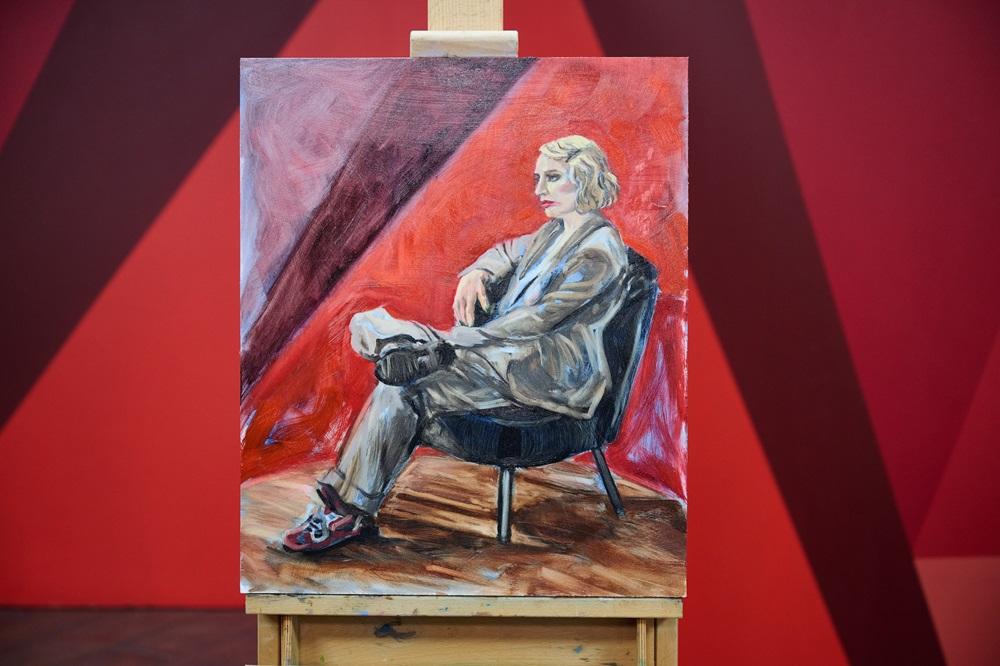
HEAT 8 WINNER: KIRSTIN MACKINNON
Hi Kirstin, congratulations on winning Heat 8! How did you find the experience of painting a celebrity live in front of the cameras and judges?
Thank you! It was quite an intense experience, but also unique, enjoyable and totally unforgettable. I am not used to having people observe my painting process, so that was interesting. However, I usually work from life where possible, so I was quite comfortable chatting throughout the day, in the same way I would chat with the sitter ordinarily.
Tai called your self-portrait which depicts you with a painted-on moustache as ‘a beautifully painted joke’ as it seems the moustache lies on the surface of the painting, rather than on the surface of the face. But beyond the joke, your submission highlights the serious subject of gender inequality in the art world. Can you discuss your concerns on this subject and why you chose to draw attention to it?
I was fortunate to study Fine Art under Dr Helen Gorrill at Duncan of Jordanstone College of Art. She wrote the book Women Can’t Paint (2020) in response to a claim by the artist Georg Baselitz’ that: “Women don’t paint very well. It’s a fact.” -Georg Baselitz (2013).
In her writing, Gorrill demonstrates that the art market and many art institutions still favour men, who currently earn ten times more than women artists. Shockingly, Gorrill discovered that when a woman signs her painting, its value drops! Historically, women were excluded from art education and life drawing was considered immoral for women to attend. Women who did paint were often dismissed as ‘hobbyists’, as the notion of ‘artistic genius’ (particularly for painting) was reserved for men. Current literature suggests that painting is still considered a masculine medium.
I believe the art world should act as a mirror for modern society. Therefore, public representation of artists should adequately reflect the population demographics. Artists of all genders, ethnicities and other protected characteristics deserve a platform for sharing their work. I am grateful to the judges for giving me the opportunity to highlight this topic through my painting ‘Moustache You a Question’.
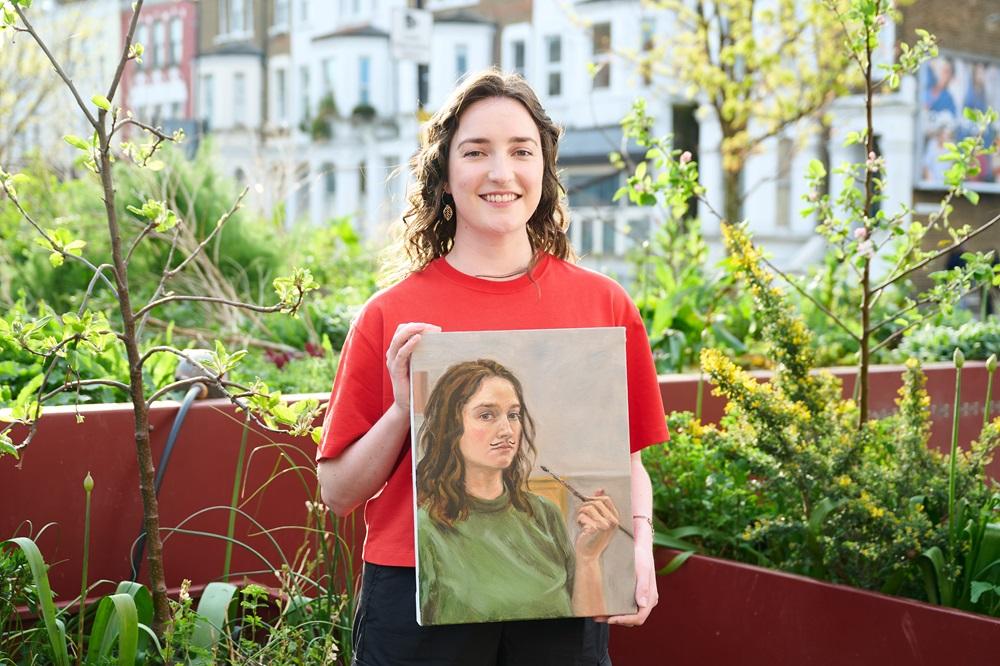
Your sitter was musician, singer-songwriter and theatre composer Rebecca Taylor a.k.a Self Esteem. The judges really enjoyed your loose brushwork and the way you incorporated the full figure and background. Can you walk us through how you tackled the scene?
I saw Self Esteem play at the Barrowlands in Glasgow last year, so I was honoured to paint Rebecca. I decided on the full body composition since the ‘object’ she brought for us to respond to was her entire outfit (which portrayed the Cabaret character Sally Bowles). I began with a couple of warm-up sketches before starting my final piece. I was working from life, in oils, using my paintbrush as a tool to check proportions. I later added details like the lipstick smudge and some strands of hair in Rebecca’s wig. I finished by incorporating the wooden platform her chair was placed on, to represent her work on stage.
You started off with loose painterly sketches using large brushes. What are your go-to brushes and other art supplies?
I prepare canvases and boards with four layers of Winsor & Newton white gesso primer. My essential paints are Michael Harding: titanium white, ultramarine blue, burnt umber, cadmium red and cadmium yellow. To begin a painting, I mix a colour and create a ‘wash’ by thinning it down with a combination of linseed oil and distilled turpentine. I cover the entire surface with this, wiping away the lighter areas in the composition with cotton rags. I then use coarse, cheap paintbrushes for blocking in darker tones and shapes. I have handmade ‘master’s choice’ paintbrushes by Rosemary & Co. for the final stages of a portrait, particularly for adding painterly details at the end.
Thanks Kirstin! See more of Kirstin’s work at kirstinmackinnon.art or @kirstinmackinnon.arton Instagram.
ARE YOU THE NEXT WINNER?
If you think you’ve got what it takes to become the next Sky Arts Portrait Artist of the Year, the deadline for entries for Series 12 is midday Friday 7th February 2025. Find out more and apply at skyartsartistoftheyear.tv/portrait. Good luck!
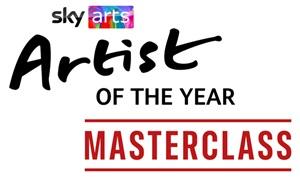

Feeling inspired? Check out Sky Arts Artist of the Year Masterclass, a new series featuring tutorials from a host of talented artists who have taken part in Portrait Artist of the Year or Landscape Artist of the Year. In this 40-episode series, they demonstrate easy-to learn techniques for budding artists at home. Find out more at skyartsartistoftheyear.tv.
Image credits: Photography © Sky Arts, paintings © Storyvault.
